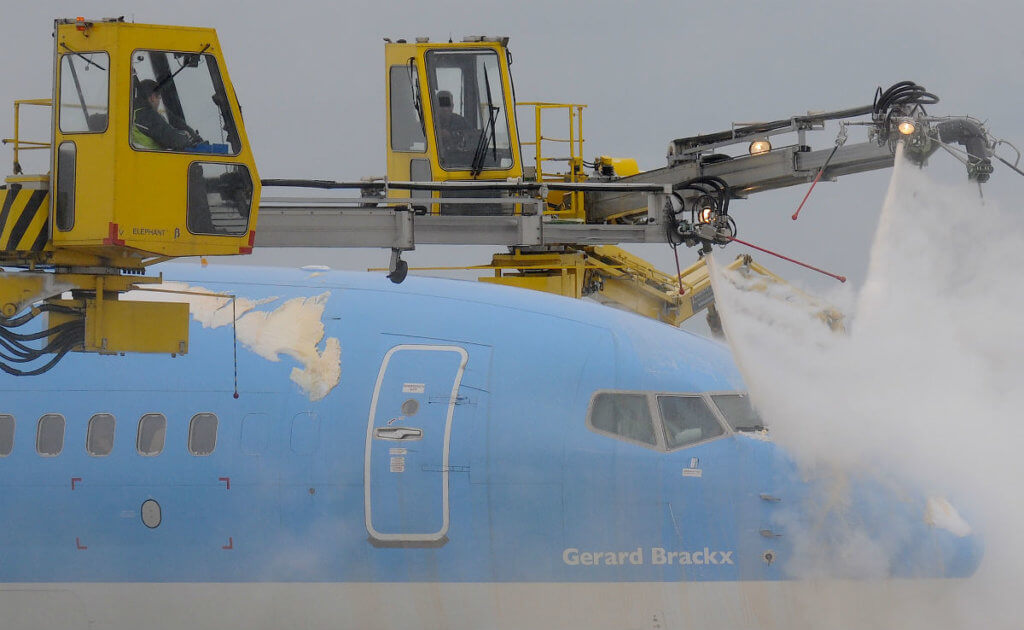Estimated reading time 6 minutes, 23 seconds.
The Canadian Business Aviation Association (CBAA) has succeeded in breaching a long-standing de-icing dam at Toronto’s Lester B. Pearson International Airport (YYZ).

CBAA president Rudy Toering is optimistic that a recent agreement–which guarantees business aircraft access to a number of de-icing slots at Pearson–will become a model for other airports where commercial carriers heavily influence access to de-icing services.
“It had been more than two years running that we [business aviation] didn’t have access to the central de-icing facility (CDF) at Pearson International,” Toering told Skies during an Oct. 7 interview at his Ottawa office, the day after the agreement with the Greater Toronto Airports Authority (GTAA) was reached.
He explained that the departure management initiative at YYZ had meant that only the airlines had access to the CDF. It was a “kind of ludicrous” situation, he noted, especially given business aviation’s annual contribution to the national economy.
According to the CBAA’s recent economic impact study, business aviation operations and related manufacturing is responsible for an annual $10.7 billion economic output. Although the country’s 1,900 business aircraft are generally smaller than commercial airliners, Toering emphasized that “they carry a big punch when it comes to comes down to business for Canada nationally and internationally.”
Now, rather than being shut out of the CDF “from six o’clock in the morning to noon,” CBAA members have guaranteed access to a number of de-icing slots. However, Toering and the 11 CBAA members who accompanied him to the GTAA meeting were also told that airlines have priority at other times.
But Toering was optimistic. “The good part is that we’re now in the schedule; we now have first-come-first-served slots. That’s a step forward.”
Asked whether he was expecting any blowback from the airlines, he said that wasn’t going to happen. “Nope! They’d already been told,” he explained. “We asked that question. So it’s done and kudos to Toronto for making sure it happens.”
He said the airlines simply have no grounds for further follow-up. “We may be smaller, and may not have as many passengers onboard, but we have quite an impact on the economy and can’t afford to lose those slots.”
Toering confirmed that in the past, some airlines said they didn’t like to see a small aircraft in the de-icing lineup when they and their crews were under pressure to depart on time and to make connections. Delays or missed connections could mean added costs if a carrier has to issue tickets for meals and accommodations.
“From a national perspective, the airlines are definitely positioning themselves to control access to de-icing,” Toering noted. “They’re also positioning to control pricing.”
He said he had previously written to local airport authorities about mainline carriers’ de-icing consortiums, adding that Air Canada, WestJet and Jazz had monopolized the de-icing business at too many airports.

“They basically run the show” and a company needing ad hoc access “has to pay an exorbitant fee just to be part of the club . . . that has access to special pricing.”
Calgary International is a notable exception, with Montreal-based Groupe International Aero Mag 2000 de-icing scheduled flights at the gates. At a separate pad, several companies de-ice general and business aircraft as well as non-scheduled services.
“That works extremely well,” said Toering, adding that just a couple of hundred kilometres north, in Edmonton, “Air Canada and others basically run the show” and fees are “exorbitant because of the consortium.”
He said another model at Vancouver International “works well,” incorporating a fee structure that breaks down to 20 per cent for infrastructure and 80 per cent for each aircraft’s wing surface. “The difficulty for us is that every single airport has a different way of operating.”
The CBAA plans to continue examining the situations at other airports such as Halifax and Montreal to ensure that its members have appropriate access to de-icing services.
Toering acknowledged that de-icing presents a significant environmental challenge. The most common de-icing fluids blend propylene glycol with thickeners, surfactants, corrosion inhibitors and dyes, an effective but ecologically challenging soup which must be managed.
“Airports do have an issue when it comes down to recovery, ensuring that the liquid doesn’t get into the environmental drain-off,” he said. “That’s something that needs to be managed. Quite frankly, when a Bombardier Challenger goes into the CDF and is standing beside a Boeing 767 or 747 and is being sprayed by the same truck, the overspray is four times what it should be. In other words, I could probably speed through four corporate jets for the same fluid volume. If we’re concerned about the environment, we should apply the relevant amount of fluid to the size of the aircraft and . . . the fees could reflect that.”
Toering explained that many airports have divested themselves of the responsibility for de-icing. He said the cost to corporate operators to join the consortiums is unacceptable and in itself can create a safety issue.
“They control both the application and access, as well as the monetary element, and some airports have stood aside and allowed this to happen.”








